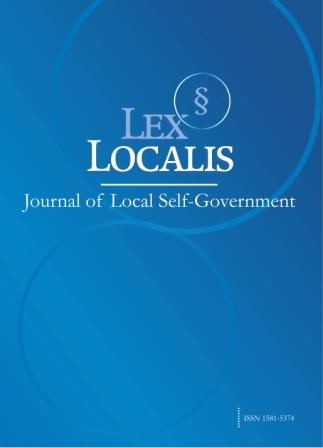Immersive Theatre and Urban Cultural Governance in China: Revitalising Public Spaces Under the ‘Cultural Tourism Integration’ Policy
DOI:
https://doi.org/10.52152/800133Ključne besede:
Immersive Theatre; Cultural Tourism Integration Policy; Urban Cultural Governance; Public Space Revitalisation; Artistic InnovationPovzetek
This study investigates how Chinese local governments have revitalised public spaces through the implementation of the "cultural tourism integration policy", with a particular focus on balancing immersive theatre development and urban cultural governance. Through an in-depth comparative analysis of three case studies, the research reveals that all three local governments have adopted governance frameworks that support the central government's cultural agenda, promote urban regeneration, and encourage artistic innovation under ideological constraints. Among them, the Shanghai local government demonstrates the most effective strategy. Its market-orientated approach, underpinned by strategic partnerships with leading technology enterprises, has successfully positioned the city as a cultural tourism hub. By transforming industrial docks into immersive theatre venues, Shanghai has significantly enhanced both tourism and cultural engagement. In contrast, the other two local governments struggled to achieve a similar balance, as an overemphasis on ideological control inhibited theatrical innovation and limited the revitalisation of public spaces. Shanghai’s model illustrates how a well-calibrated synergy between cultural governance and creative freedom can drive effective urban renewal.
Literatura
Beijing Municipal Bureau of Culture and Tourism. (2023). Annual Report on Cultural Industries Development. Retrieved from http://whlyj.beijing.gov.cn/
Cai, W., & Liu, Y. (2022). The Value of Immersive Media in Expanding Chinese Public Cultural Participation and Its Realization Path From the Perspective of Cultural Education. Educational Psychology, 915913, 13.
Caprotti, F. (2018). Spaces of visibility in the smart city: Flagship urban spaces and the smart urban imaginary. Urban Studies, 798597, 56(2).
Deloitte China. (2023). Cultural Economy Survey: Trends in Immersive Performance Spaces. Retrieved from https://www2.deloitte.com/cn
Dwivedi, Y. K., Hughes, L., Baadullah, A. M., Navarrete, S. R., Giannakis, M., & Aldebei, M. (2022). Metaverse beyond the hype: Multidisciplinary perspectives on emerging challenges, opportunities, and agenda for research, practice and policy. International Journal of Information Management, 102542, 66.
Goulding, C. (2023). “Atmosphere” - the what? The where? And the how?: Launching the annals of tourism research curated collection on atmosphere 2023. Annals of Tourism Research, 103591, 103591.
Hoskyns, T., Rosian, S. B., & Westermann, C. (2013). Practising collectively: Performing public space in everyday China. Technocratic Arts, 20(3), 202-224.
Hu, Y., & Chang, X. W. (2021). On construction of immersive scenarios for educational publishing in digital transformation. Public Research, 4, 5-12.
Lexhagent, M., Ziakes, V., & Lundberg, C. (2022). Popular Culture Tourism: Conceptual Foundations and State of Play. Journal of Travel Research, 140903, 62(7).
Li, D., & Xiao, J. (2024). Artistic interventions: Art, community, and media in China and beyond. Global Media and China, 286782, 10(1).
Li, N. (2020). Playing the past: Historical video games as participatory public history in China. Convergence: The International Journal of Research into New Media Technologies, 967606, 27(3).
Ozgur, O., Rob, K., Paul, H., Chris, J., Ricahrd, M., & Mick, O. (2019). Virtual reality industry Forum’s view on state of the immersive media industry. SMPTE Motion Imaging Journal, 8, 91-96.
People's Daily. (2022). Eastern Suburb Memory Park: A New Model for Cultural Tourism. Retrieved from http://en.people.cn/
Qian, J. (2019). Performing the Public Man: Cultures and Identities in China's Grassroots Leisure Class. City and Community, 12049, 13(1).
Shanghai Municipal Culture and Tourism Bureau. (2023). West Bund Economic Impact Report. Retrieved from http://whlyj.sh.gov.cn/
Shanghai Municipal People’s Government. (2023). Shanghai Urban Regeneration Action Plan (2023–2025). Retrieved from https://www.shanghai.gov.cn/
State Council. (2021). 14th Five-Year Plan for Cultural Industries (2021–2025). Retrieved from http://www.gov.cn/zhengce/content/2021-06/07/content_5615879.htm
Statista. (2024). Urbanisation in China. London: Statista.
Tan, F., Zho, J., Zou, Y., ye, J., & Li, X. (2023). Construction logic of ocean city branding: Based on cultural brand and cultural memory. Ocean & Coastal Management, 106808, 244.
Tan, F., Zhu, J., Zou, Y., ye, Y., & Li, X. (2023). Construction logic of ocean city branding: Based on cultural brand and cultural memory. Ocean & Coastal Management, 106808, 244.
Tencent Culture. (2023). Digital Innovation in Performing Arts: The Immersive West Bund Project. Retrieved from https://www.tencent.com/
Toland, A., & Christ, M. C. (2020). Documenting topographic ecologies in Hong Kong: visual methods for hyper-dense and hyper-topographic urban spaces in landscape architecture. Visual Communication, 927060, 19(3).
Vongvisitisin, T. B., Huang, W. J., & King, B. (2024). Immersive Theatre and Urban Regeneration in China. Journal of Travel Research, 103759, 106.
Wang, J., & Chen, L. (2019). Guerrilla warfare, flagship project: The spatial politics of Chinese rock in Shenzhen’s post-political making of a musical city. Geoforum, 106, 349-357.
Wang, Z., Tang, J., Zhou, L., & Goh, B. K. (2024). Tourists’ Embodied Metaphors in Lifestyle Cultural Space. Journal of Hospitality & Tourism Research, 1237089, 49(4).
Xia, G. F. (2017). Exploratory study on the application of immersive interactive experience communication in digital reading products. Media, 5, 88-90.
Xiao, Y., Wan, Y., & Xue, C. Q. (2019). Performing arts buildings in Taiyuan: Cultural history buildings in a second-tier Chinese city. Frontiers of Architectural Research, 8(2), 215-228.
Xiaoping, M., Maulan, L. S., & Muthaveren, A. A. (2025). Designing for Acceptance: Exploring Public Preference Mechanism in Chinese Public Art. Pakistan Journal of Life and Social Sciences, 23(1), 8460-8471.
Yu, F. S., & Zhang, Y. (2020). Immersive communication: sensory resonance, image restoration and presence participation. Humanity and Social Science, 2, 96-103.
Yuhui, T., Dawam, Z. A., & Zainal, S. (2024). Immersive Theatre: A Comprehensive Review and Future Direction. Pakistan Journal of Life and Social Sciences, 22(2), 3767-3775.
Zhao, X., & Keane, M. (2023). Sino-futurism and alternative imaginaries of Digital China. Media International Australia, 215108.
Zhao, X., Xie, X., & Song, Z. (2025). Cultural and economic dynamics of digital immersive art in China’s creative industries. International Journal of Cultural Policy.
Objavljeno
Številka
Rubrika
Licenca
Avtorske pravice (c) 2025 Lex localis - Journal of Local Self-Government

To delo je licencirano pod Creative Commons Priznanje avtorstva-Nekomercialno-Brez predelav 4.0 mednarodno licenco.








